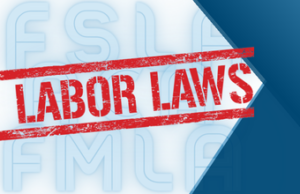
Compliance with labor laws is critical in the realm of time and attendance management. It ensures that employers uphold the rights of their employees, promotes fairness in the workplace, and avoids legal liabilities. In this article, we’ll delve into the significance of compliance with labor laws concerning time and attendance, explore key regulations, and discuss best practices that organizations can adopt to ensure accuracy and fairness.
Importance of Labor Law Compliance
Compliance with labor laws is vital for protecting the rights and well-being of both employees and employers. By adhering to these regulations, organizations demonstrate their commitment to fair employment practices and foster a positive work environment. Compliance also helps prevent exploitation, wage theft, and unfair labor practices.
Time and attendance management plays a crucial role in labor law compliance as it directly impacts several key areas, including minimum wage, overtime pay, rest and meal breaks, record-keeping, and time-off entitlements. Accurate tracking and proper documentation of employee work hours are essential to ensure compliance with labor laws.
Key Regulations in Time and Attendance
Numerous labor laws govern time and attendance management in different jurisdictions. Understanding these regulations is vital for organizations to remain compliant and avoid legal repercussions. Let’s explore some key regulations:
- Fair Labor Standards Act (FLSA): The FLSA is a cornerstone labor law in the United States. It establishes minimum wage requirements, mandates overtime pay for eligible employees working more than 40 hours per week and requires accurate record-keeping of hours worked.
- Family and Medical Leave Act (FMLA): The FMLA ensures eligible employees can take unpaid leave for specific family or medical reasons. Compliance with FMLA involves tracking and managing leave entitlements, including the documentation of qualifying events and the provision of job protection.
- Affordable Care Act (ACA): The ACA requires employers to offer affordable health insurance to eligible employees. Accurate tracking of employee hours is essential for determining eligibility and compliance with ACA requirements.
- State-Specific Labor Laws: Many states have their own labor laws that supplement federal regulations. These laws may cover areas such as minimum wage rates, paid sick leave, paid family leave, and scheduling practices. Organizations must be aware of and comply with both federal and state labor laws.
Best Practices for Compliance with Time and Attendance Requirements
To ensure compliance with labor laws in time and attendance management, organizations should adopt the following best practices:
- Accurate Time Tracking Systems: Implementing reliable time tracking systems, such as biometric time clocks or digital time tracking software, minimizes errors and enhances accuracy. These systems provide automated and precise records of employee work hours, breaks, and time off.
- Clear Attendance Policies: Establishing clear attendance policies that outline expectations regarding punctuality, break duration, and time-off procedures is essential. These policies should be communicated effectively to all employees and regularly reviewed and updated to align with labor laws and company requirements.
- Training and Education: Conduct regular training sessions for managers and employees on time and attendance policies, labor laws, and employee rights and responsibilities. Educating the workforce ensures everyone understands the importance of compliance and can address any questions or concerns.
- Record-Keeping and Documentation: Accurate record-keeping is crucial for compliance. Organizations should maintain comprehensive records of employee work hours, breaks, time-off requests, and any modifications or exceptions to standard attendance practices. These records should be securely stored and easily accessible for auditing purposes.
- Monitoring and Auditing: Regularly monitor time and attendance data, conduct internal audits, and identify patterns or discrepancies that may indicate non-compliance. Timely intervention and corrective measures can be taken to rectify any errors or violations.
- Consultation with Legal Experts: Labor laws can be complex, and they vary across jurisdictions. Seeking legal counsel or consulting with labor law experts can provide valuable guidance in ensuring compliance and staying up-to-date with any changes or amendments in regulations.
- Review and Update Policies: Stay informed about changes in labor laws and periodically review and update time and attendance policies to ensure compliance. Engage legal experts or human resources professionals to assist in assessing policy alignment with evolving labor regulations.
- Communication and Transparency: Foster a culture of communication and transparency regarding time and attendance management. Encourage employees to report any concerns or discrepancies and ensure that supervisors and managers are approachable to address such issues promptly and fairly.
Conclusion
Compliance with labor laws in time and attendance management is crucial for organizations to ensure accuracy, fairness, and legal compliance. By adhering to key regulations, implementing best practices, and fostering a culture of transparency and accountability, organizations can create a work environment that respects employees’ rights and promotes fairness. Compliance not only mitigates legal risks but also nurtures a sense of trust and equity among the workforce. By prioritizing compliance, organizations can build a foundation of ethical and responsible employment practices, benefiting both employees and employers alike.
How Commonwealth Payroll & HR can help:
Commonwealth Payroll & HR offers a complete end-to-end, hire-to-retire Human Capital Management (HCM) system that includes our Time and Attendance solution. Using the latest technology, our Time and Attendance enables you to more effectively collect, manage and process employee time and attendance data. You can support multiple locations and time collection options, managed through a simple but powerful online interface. Contact us today to learn more.
Learn more on this topic in the following recorded webinar: TIME & LABOR MANAGEMENT | A Better Solution
*The information provided in this article does not, and is not intended to, constitute legal advice; instead, all information is for general informational purposes only. Information in this article may not constitute the most up-to-date legal or other information. This article may contain links to other third-party websites provided only for the convenience of the reader.
 TOP
TOP